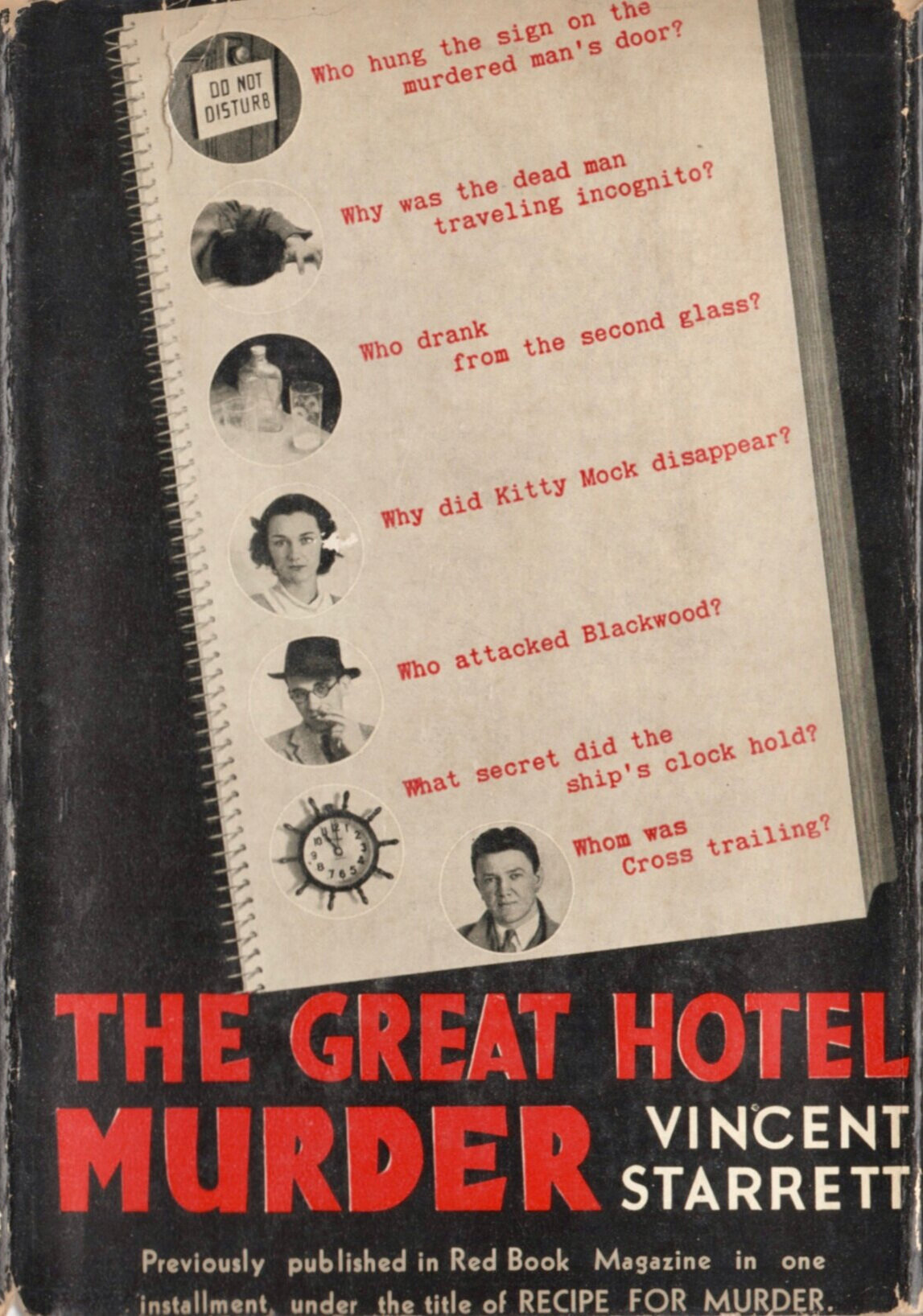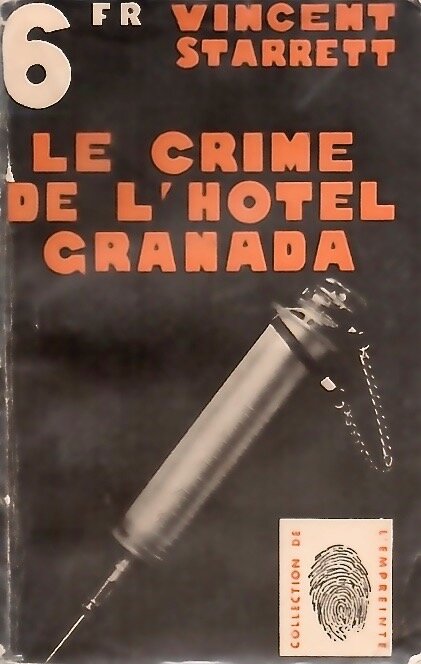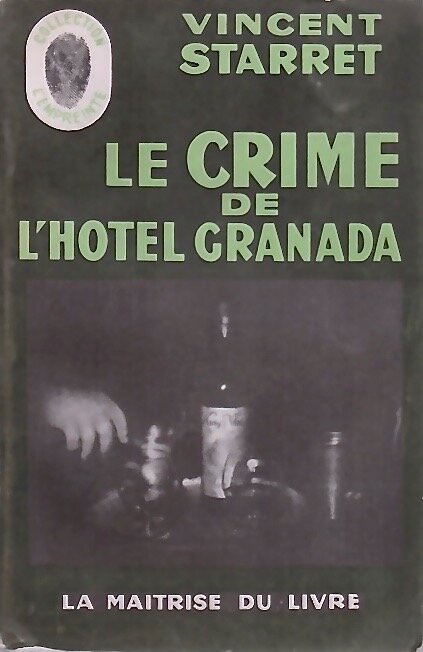The Great Hotel Murder, Redux
A beautiful new edition of a classic Starrett mystery novel
The cover to the 2020 reprint of The Great Hotel Murder. The very handsome cover image is by Andy Ross and cover design is by Mauricio Diaz.
Otto Penzler has been busy over the last few years. Not only does he run the Mysterious Press Bookshop, he also edits a couple of books a year (including his Big Books of series). Recently he has been overseeing the publication of mystery classics with new introductions.
This fall, he added Vincent Starrett’s first Riley Blackwood novel, The Great Hotel Murder to the list, and got the talented and lovely Lyndsay Faye to do the introduction. Lyndsay’s introduction hits the right note when it comes to Blackwood, our hero:
One gets the feeling (and again, here we veer into territory that may ever so slightly resemble Starrett himself) that Blackwood would absolutely love to be Sherlock Holmes if he could, but he is plagued by that pesky ailment so many of us suffer from: being a mere mortal.
And later she observes:
“Starrett penned what he did for love of a ripping good yarn, without blushing or prevaricating or gatekeeping of any sort, wanting only to give his audience a chance to escape the reality of their lives for a little while. What a lovely goal. What a timeless one.
It’s not every day that one of Starrett’s novels gets such a handsome and caring rebirth, so I thought I would briefly review the book’s history and place the current edition along the continuum.
Before we start: Some of you might recall a three part series on The Great Hotel Murder that appeared here in 2017. If you want more than this overview, I would recommend jumping back in time to get an in depth perspective on Riley Blackwood’s debut.
Enter Riley Blackwood
Each of Starrett's detectives tended to be variations on the author, and Blackwood is no different. A drama critic at a Chicago newspaper, Blackwood can be a bit pompous, yet he can be endearing and clever enough to make even jaded city police detectives stop and listen.
Blackwood is called in by a friend at the Granada Hotel to figure out what happened when a dead man is discovered in a room. Blackwood is soon overwhelmed by the complexity of the case. Was it suicide or murder? Who was the victim? Why did he change his room with a very alive suspect? What was going on at the hotel across the street? And what’s with that very fast boat that has just whipped out of its dock on the lake?
It’s rather complicated stuff. And while Blackwood gets the guilty guy in the end, it is as much through his dumb luck as it is through Sherlockian-like observation and deduction. Still, there is action aplenty in the city and the country, as Blackwood slips from Chicago’s High Society to more dangerous rural locales.
The story premiered in REDBOOK magazine in the November 1934 issue. Using the title “Recipe for Murder,” it ran across several pages.
The title seems a little off, since there is no recipe ever discussed, and I can’t help but wonder if Starrett’s preferred title “The Great Hotel Mystery” was altered by the REDBOOK editors to somehow make it more appealing to a female audience.
Between hard covers


The REDBOOK appearance was a condensed version of the novel, which was published in early 1935 by Doubleday, Doran & Co. Reprint editions followed by The Sundial Press in 1937 and two Caxton House editions in 1939.
There is also a British edition out there, which I haven’t been able to track down.
Among the critics
There weren’t many reviews, but the few critics who made note of the book seemed to like it.
Here’s a nod from The New York Times of May 19, 1935.
"Mr. Starrett has devised an ingenious plot with enough complications to keep the reader guessing, and he has placed the solving of the problem in the hands of a man who, without being a miracle worker, is capable of clear thinking and taking advantage of the breaks when they come his way. The Great Hotel Murder makes good reading."
The British edition gained some attention in the Times Literary Supplement where the anonymous reviewer said:
"An amateur detective (why is it a tradition that these must always be rude?) does a great deal of intricate reasoning before alighting, rather by chance, on the true culprit. In short, the story is exciting enough to read, though weak in the joints when examined too closely."


Ooh la la
Perhaps my favorites among these early printings are the two French editions which came out in paperback in response to that nation’s fascination for detective stories.
Le Crime De L’Hotel Granada was translated into French by Simone Lechevrel and published in 1937 as No. 113 in a series of mysteries by the Nouvelle Revue Critique at 11 Rue Francois-Mouthon, Paris. Ten years later, the novel was republished by La Maitrise Du Livre at 7 Boulevard Morland, Paris.
At the movies
From The Press and Sun-Bulletin of Binghamton, NY for Nov. 26, 1934.
The stars of the 1935 film version.
Here is where the big money comes in. Starrett sold the film rights to this and some of his other detective novels to Hollywood in 1934. For the first time in his career, he was flush with funds! He came to New York for the December Baker Street Irregulars dinner and then booked passage for two for an around the world trip.
It would not be until later that he would see what Hollywood had done with his film. Some elements remained the same but there were major changes, and it left even the author a bit confused.
"I saw a good story presented by a competent cast and most of the figures of the tale were called by names I had invented; but there the resemblance ended. Nobody was more surprised than the author by the revelation of the killer's identity. It was a humbling experience."
Thus ends the saga of “The Great Hotel Murder.” If you’ve not read it yet, you now have a good reason to pick it up.


